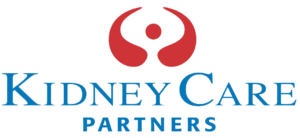Kidney Care Partners Raises Concerns Around 2025 ESRD PPS Proposed Rule
June 28, 2024
WASHINGTON – Kidney Care Partners (KCP) – the nation’s leading kidney care multi-stakeholder coalition representing patient advocates, physician organizations, health professional groups, dialysis providers, researchers, and manufacturers – today released the following statement in reaction to the Centers for Medicare & Medicaid Services (CMS) proposed rule on End-Stage Renal Disease (ESRD) Prospective Payment System (PPS), Payment for Renal Dialysis Services Furnished to Individuals with Acute Kidney Injury (AKI), End-Stage Renal Disease Quality Incentive Program (QIP), and End-Stage Renal Disease Treatment Choices Model (ETC):
While our members continue to review the proposed rule, KCP is deeply concerned about the sustainability of the program given that the market basket fails to reflect the actual increase in costs incurred by facilities. Moreover, we are disappointed that CMS did not heed the kidney care community’s call for reforms to address the barriers the current payment policies have created in terms of patients being able to access innovative treatment options. Without changes in these areas, dialysis patients who are, as CMS notes, “disproportionately young, male, African American, have disabilities and low income” will continue to experience significant inequities when compared to patients with other chronic diseases.
Despite these concerns, KCP supports CMS’ proposal to expand access to home dialysis for patients with acute kidney injury (AKI). Increasing access for AKI patients is particularly important, as it can improve outcomes and enable patients to recover kidney function, avoiding permanent kidney failure that can lead to a need for life-long dialysis or kidney transplant. KCP also appreciates CMS’ ongoing attention to the cost and operational challenges associated with moving historically unbundled drug products into the PPS and urges CMS to provide sufficient funding to support these activities which are not currently covered by the base rate. We are also pleased that CMS seeks to better direct resources to low-volume facilities through the two-tiered low-volume adjuster. Moreover, KCP is heartened that CMS has addressed the community’s concerns and has proposed to reinstate the four individual dialysis adequacy measures and to remove the National Healthcare Safety Network (NHSN) dialysis event reporting measure.
Need for a Sustainable Market Basket that Reflects the Cost of Providing Care to Individuals Requiring Dialysis Services
CMS proposes a market basket increase (minus the productivity factor) of 1.8 percent, based on the existing market basket methodology. We appreciate that CMS is trying to address this issue, but the rule falls short of meeting the actual increase in costs that dialysis facilities have experienced. In addition to failing to capture actual inflationary costs for the fifth year in a row, the dialysis market basket increase has historically been the lowest among Medicare providers, making it extremely challenging for dialysis facilities to compete against the wages provided by other providers, such as hospitals, which have seen significant increases in additional funding in recent years.
KCP continues to urge CMS to reexamine the market basket methodology in light of actual cost data demonstrating increases and provide a more sustainable update.
The Current Post-TDAPA Policy Continues to Stifle Innovation, Despite Efforts to Address the Lack of Adequate Funding for New, Innovative Therapies in the Base Rate
KCP appreciates language in the preamble demonstrating that CMS recognizes that the current policies negatively impact patient access to new, innovative treatment options.
However, the proposed modifications do not go far enough to address the failure of the post-Transitional Drug Add-on Payment Adjustment (TDAPA) temporary base rate adjustment to meet its intended purpose of incentivizing access to new drugs and biological products. KCP had hoped that CMS would take a more patient-centric approach and reform this policy by revising its methodology in recognition that, as designed, the bundle does not include sufficient funding for new treatment options that address recognized gaps in care. As the real-world example of patients not being able to access the only FDA-approved drug to treat CKD-associated pruritus demonstrates, an inadequate payment rate for innovative products creates a significant barrier to patient access.
KCP urges CMS to consider the kidney care community’s concerns and looks forward to providing more specific feedback in forthcoming comments.
